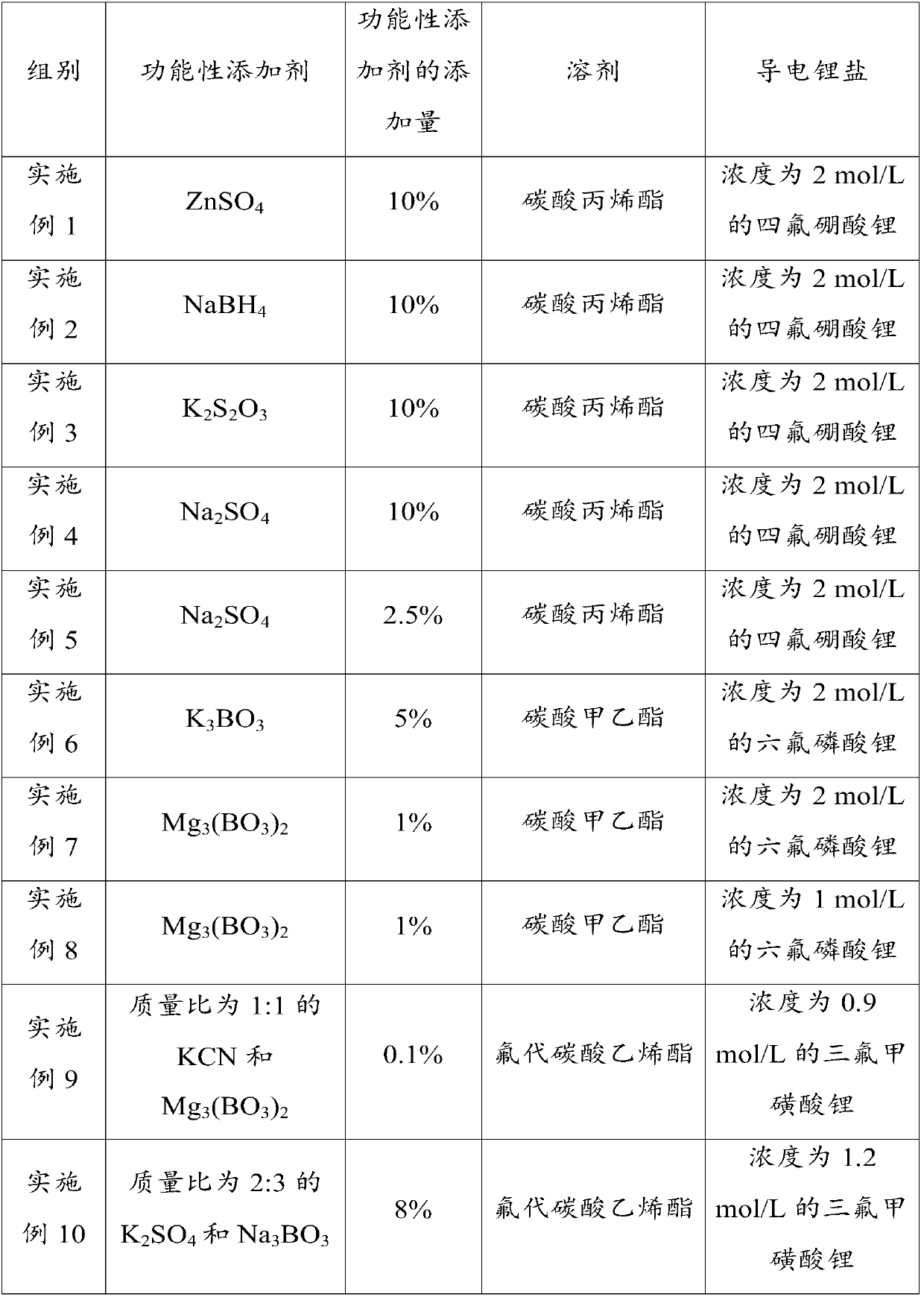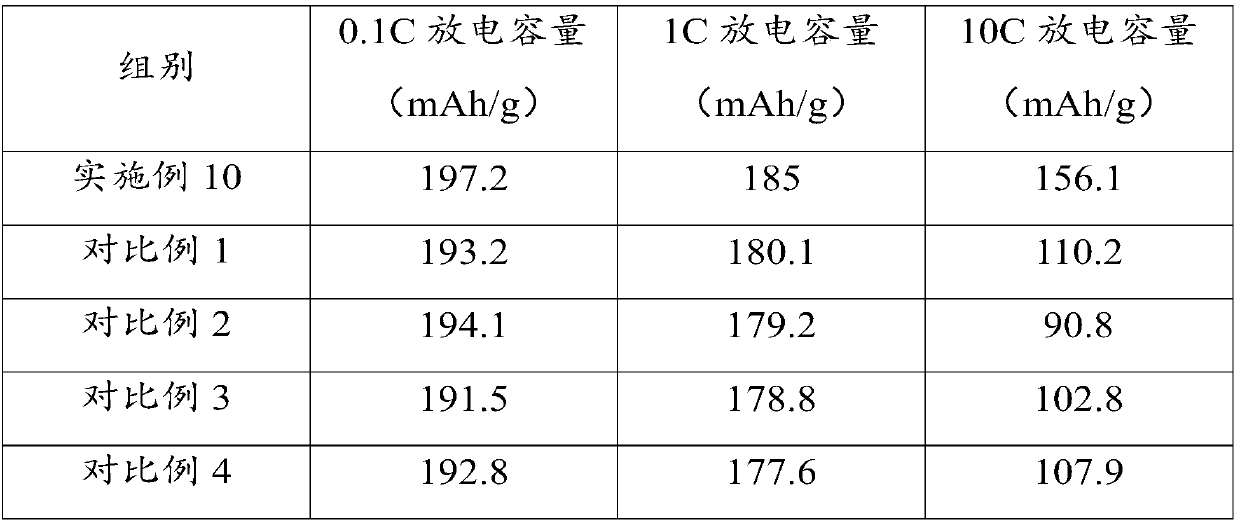Functional additive for high-voltage lithium ion battery, electrolyte for high-voltage lithium ion battery and high-voltage lithium ion battery
A functional additive, lithium-ion battery technology, applied in secondary batteries, secondary battery repair/maintenance, circuits, etc., can solve the problems of reduced structural stability of positive electrode materials, irreversible attenuation of capacity, collapse of positive electrode material structures, etc. , to achieve the effects of improving cycle stability, reducing electrochemical activity, and inhibiting decomposition
- Summary
- Abstract
- Description
- Claims
- Application Information
AI Technical Summary
Problems solved by technology
Method used
Image
Examples
preparation example Construction
[0077] Exemplarily, the preparation method of the high-voltage lithium-ion battery electrolyte includes the following steps: uniformly mixing the solvent after water and impurity removal with conductive lithium salt, and then uniformly mixing with the above-mentioned functional additive after water and impurity removal.
[0078] Preferably, the solvent and the functional additive are independently dewatered and impurity removed by one or more of activated carbon, 3A molecular sieve, 4A molecular sieve, calcium chloride, anhydrous calcium oxide and calcium hydride. Preferably, the 3A molecular sieve or the 4A molecular sieve is activated and then used for water and impurity removal, which can be activated by means of heating, purging, ammonia flushing or adsorbent adsorption.
[0079] Preferably, the temperature at which the solvent is mixed with the conductive lithium salt and the temperature at which the functional additive removes water and impurities are each independently 2...
Embodiment 1-10
[0089] A high-voltage lithium-ion battery electrolyte, which includes a solvent, a conductive lithium salt, and functional additives, and the formulations of the electrolytes in each embodiment are listed in Table 1.
[0090] Table 1
[0091]
[0092] The difference between embodiment 4 and embodiment 1-3 is that embodiment 4 has adopted the preferred functional additive of the present invention;
[0093] The difference between embodiment 5 and embodiment 4 is that the addition amount of the functional additive in embodiment 5 is within the preferred range of the present invention;
[0094] The difference between Example 8 and Example 7 is that the concentration of the conductive lithium salt in Example 8 is within the preferred range of the present invention.
[0095] The high-voltage lithium-ion battery electrolytes of Examples 1-10 were used to prepare lithium-ion batteries respectively. Except that the electrolytes were different, all the other components of the lithiu...
PUM
 Login to View More
Login to View More Abstract
Description
Claims
Application Information
 Login to View More
Login to View More - R&D
- Intellectual Property
- Life Sciences
- Materials
- Tech Scout
- Unparalleled Data Quality
- Higher Quality Content
- 60% Fewer Hallucinations
Browse by: Latest US Patents, China's latest patents, Technical Efficacy Thesaurus, Application Domain, Technology Topic, Popular Technical Reports.
© 2025 PatSnap. All rights reserved.Legal|Privacy policy|Modern Slavery Act Transparency Statement|Sitemap|About US| Contact US: help@patsnap.com


